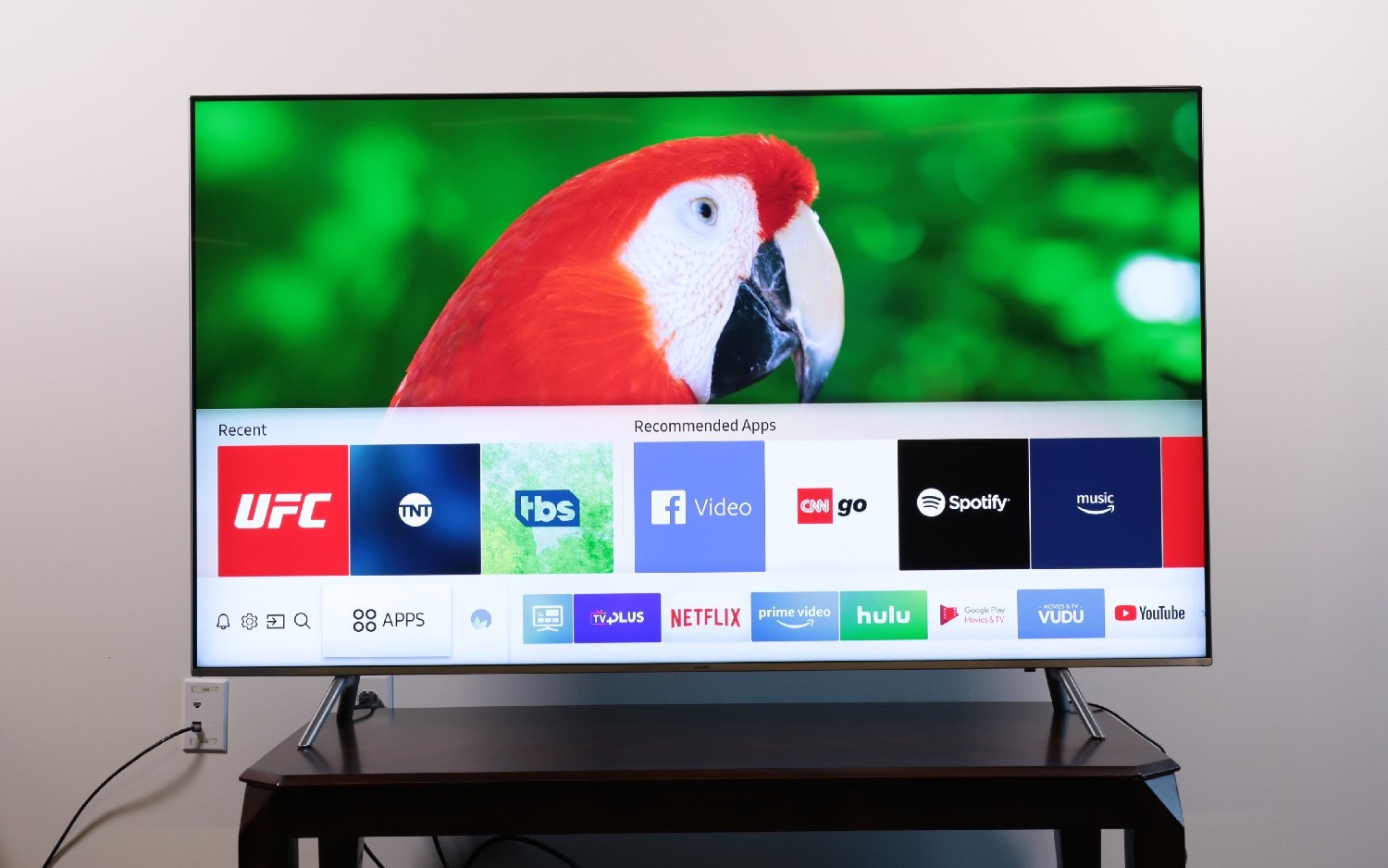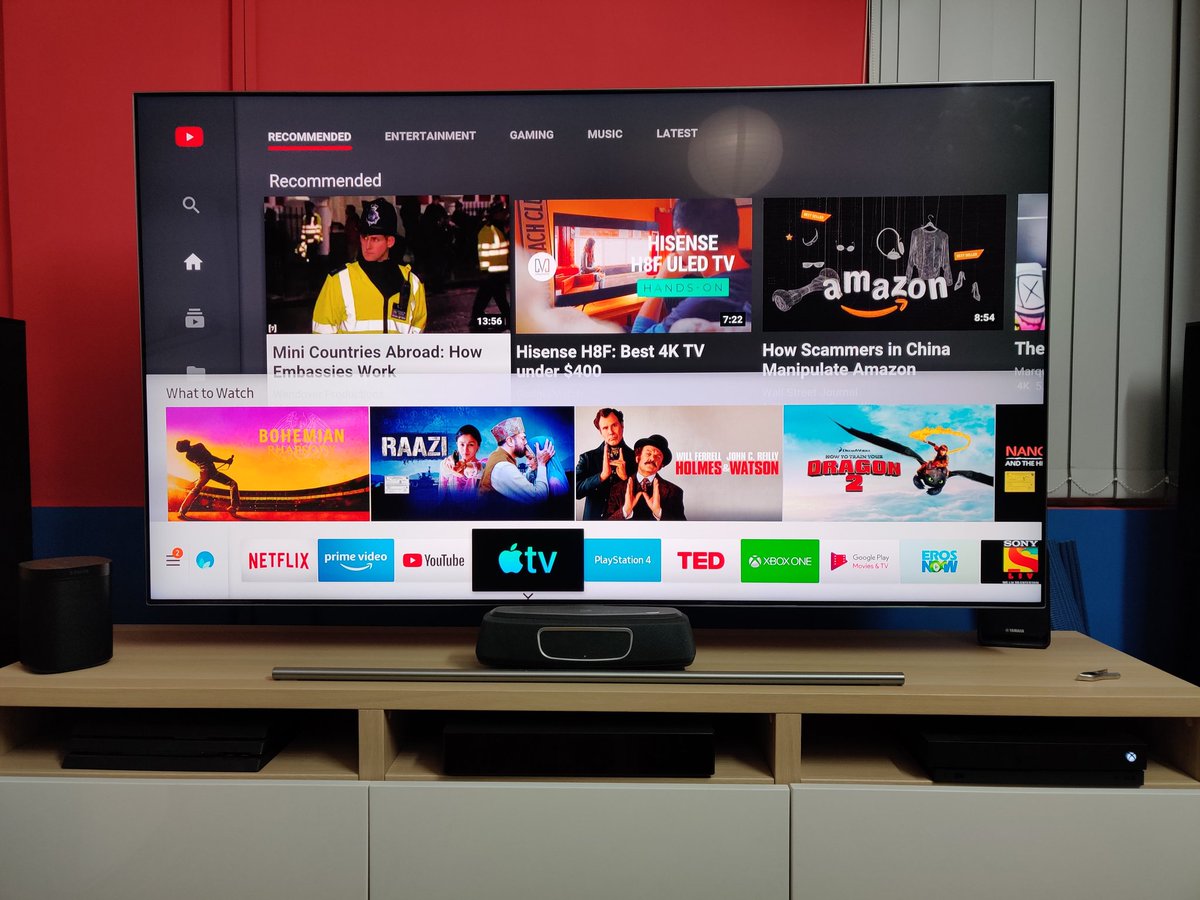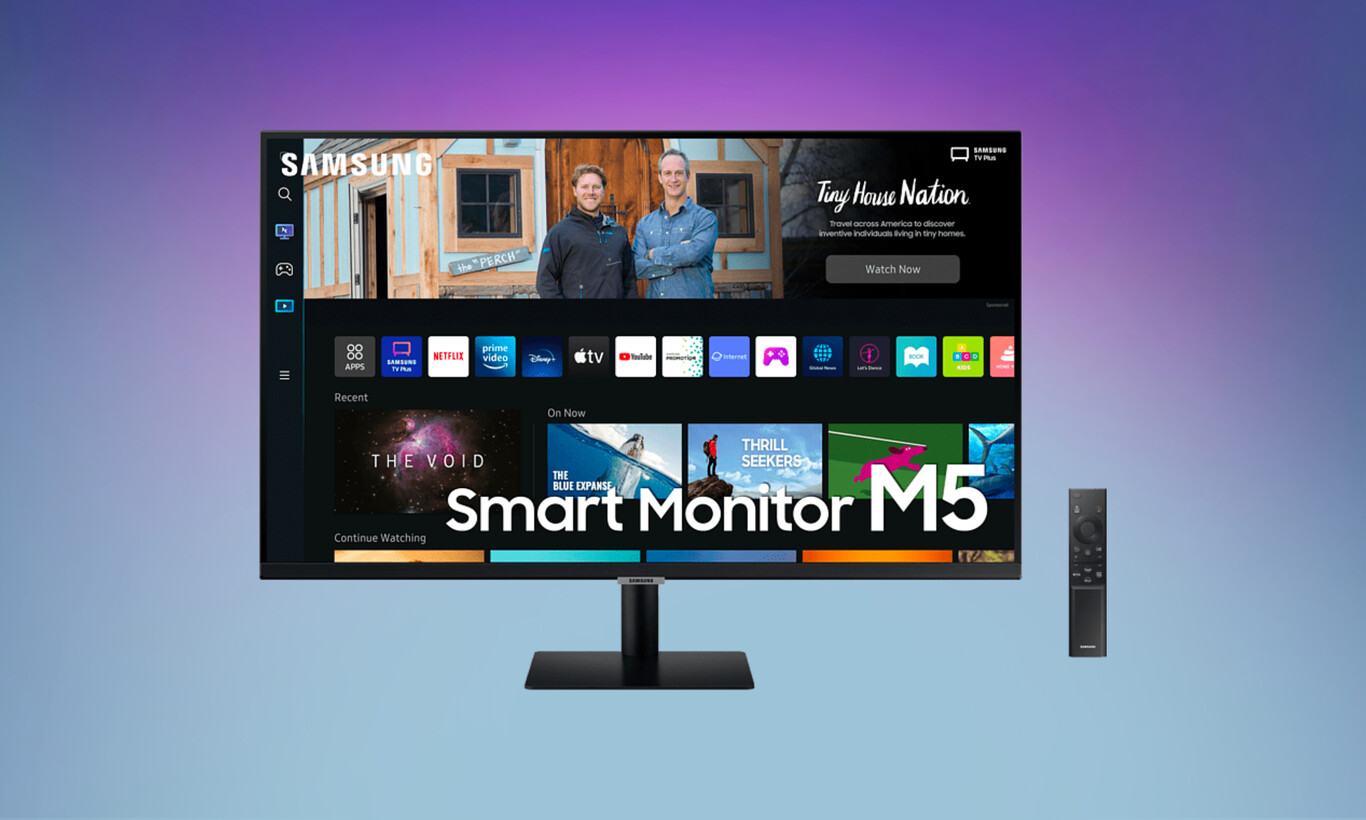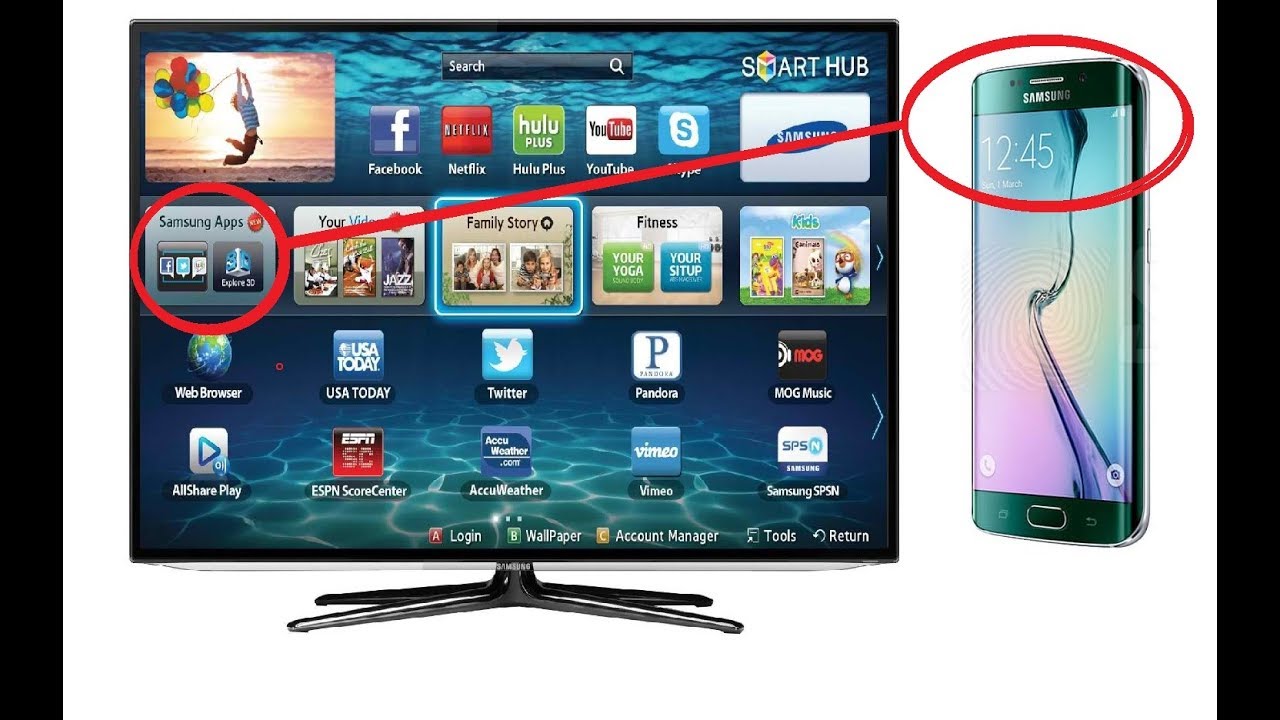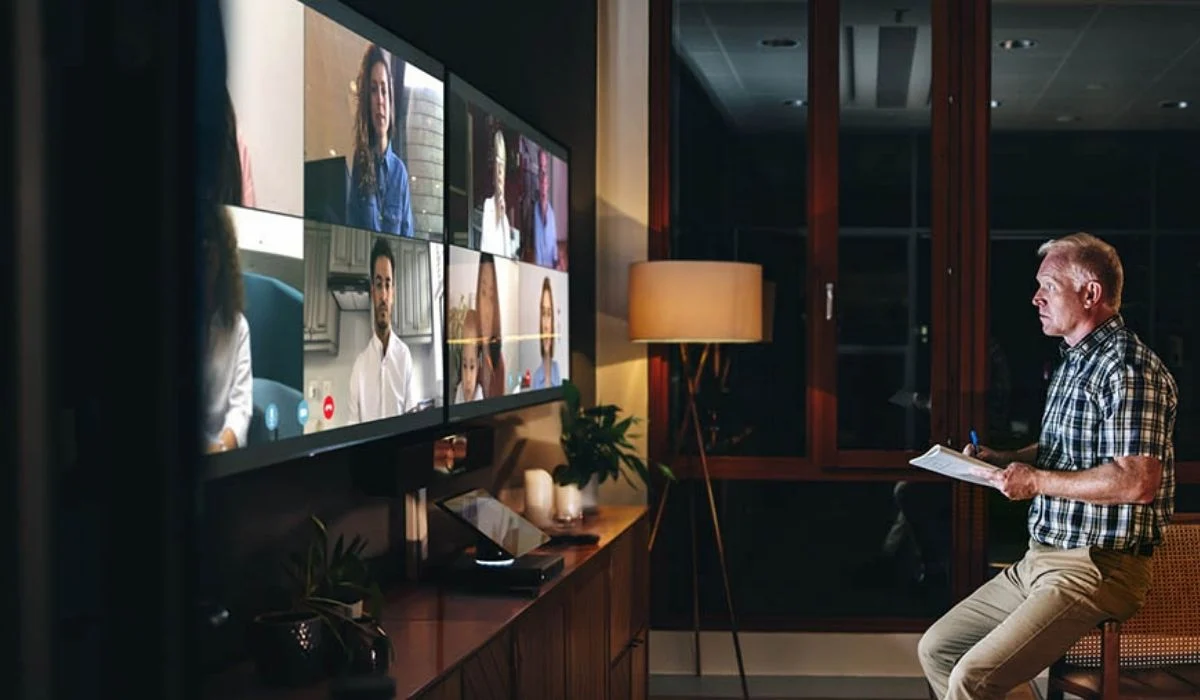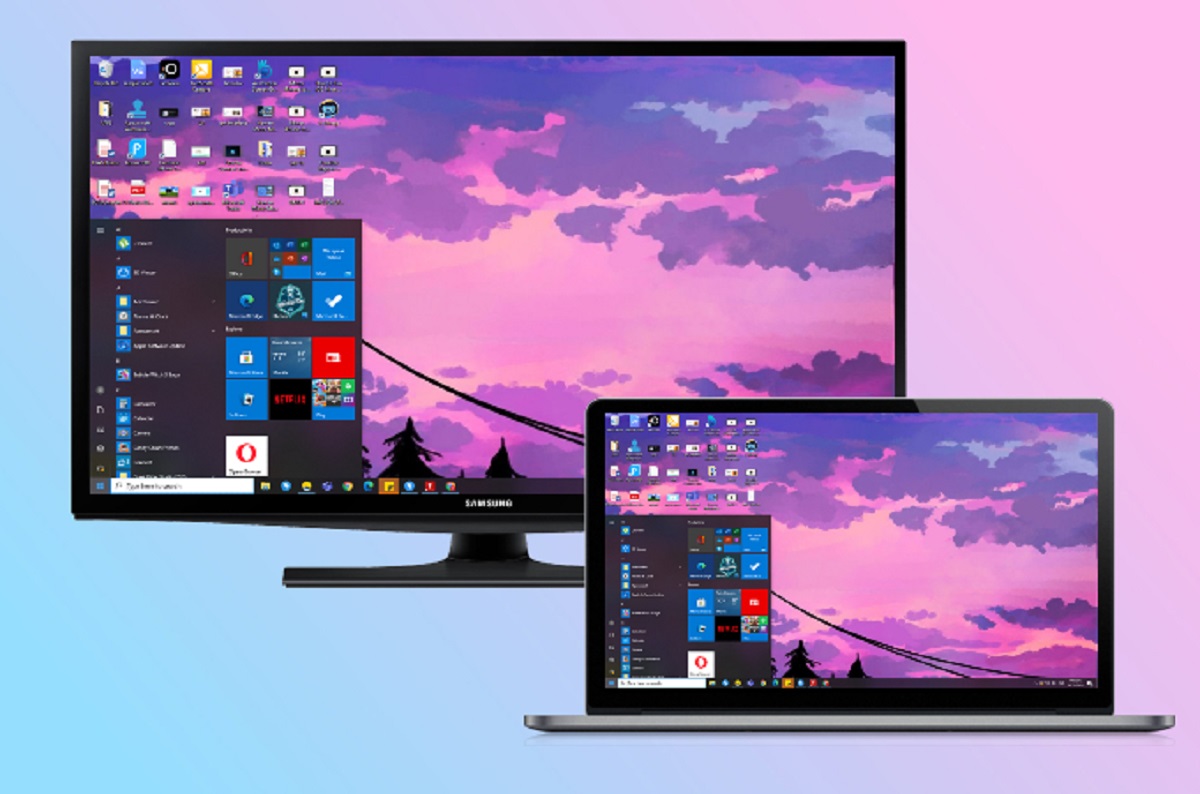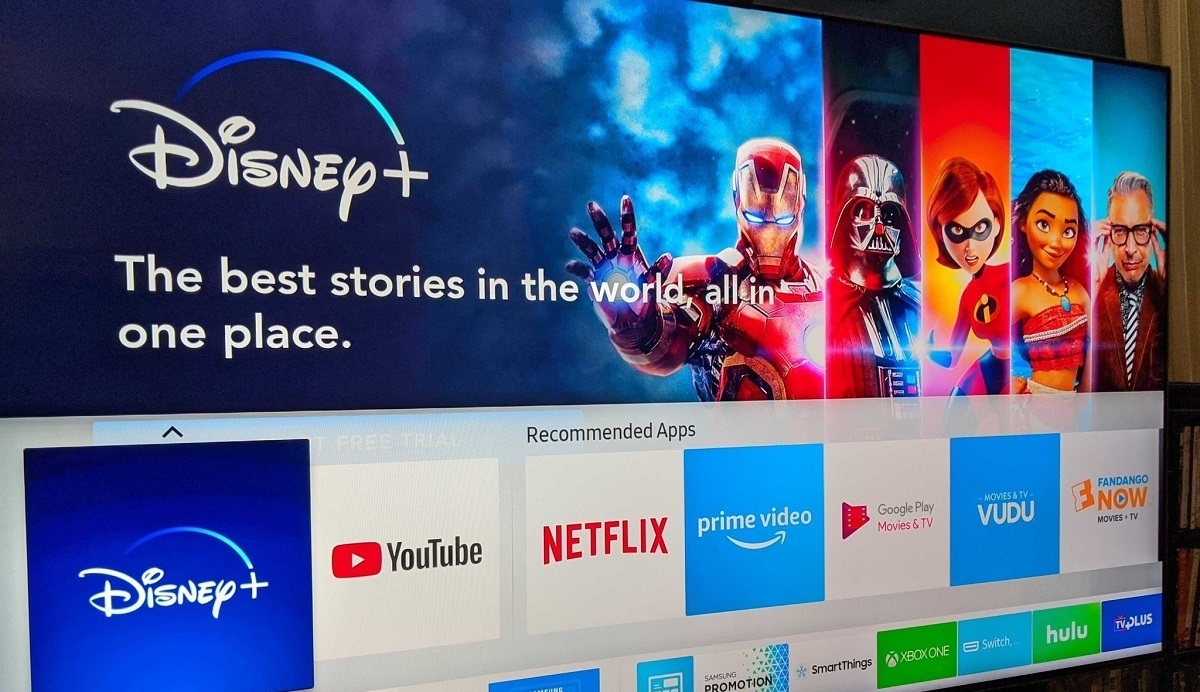Introduction
Welcome to a guide on how to screen mirror to a Samsung Smart TV! Screen mirroring, also known as screen casting, allows you to display the content from your smartphone, tablet, or computer directly onto your Samsung Smart TV. Whether you want to share photos, videos, presentations, or even play games on a bigger screen, screen mirroring provides a convenient and immersive experience.
Samsung Smart TVs are equipped with advanced features that enable seamless screen mirroring from a wide range of devices. Whether you have an iPhone, iPad, Android device, or a Windows or Mac computer, you can easily mirror your screen to enjoy your favorite content on the big screen in a matter of minutes.
In this step-by-step guide, we’ll walk you through the process of setting up screen mirroring on your Samsung Smart TV. You’ll learn how to check if your device supports screen mirroring, how to enable screen mirroring on your TV, and how to connect your device to your TV. Additionally, we’ll provide troubleshooting tips to help you resolve any potential issues that may arise during the screen mirroring process.
So, grab your device and get ready to take your entertainment experience to the next level by screen mirroring to your Samsung Smart TV!
Step 1: Check if Your Device Supports Screen Mirroring
Before you begin the screen mirroring process, it’s important to check if your device supports this feature. Screen mirroring is a common feature on smartphones, tablets, and computers, but the method may vary depending on the operating system.
If you have an Android device, most smartphone models running Android version 4.2 or later should support screen mirroring. To confirm, go to the settings menu on your Android device, look for “Screen Mirroring” or “Cast Screen” options, and check if they are available.
For iPhone and iPad users, Apple’s AirPlay technology allows screen mirroring. However, AirPlay is limited to casting content only to Apple devices such as Apple TV. As such, it may not support direct screen mirroring to a Samsung Smart TV. In this case, you can explore third-party apps or consider using a streaming device compatible with your iOS device.
If you have a Windows computer, screen mirroring is possible through the Miracast feature. To check if your Windows device supports Miracast, press the Windows key + P on your keyboard to open the “Project” menu. Look for options like “Duplicate” or “Extend,” which indicate support for Miracast.
Mac users can utilize the built-in AirPlay feature to enable screen mirroring. Click on the AirPlay icon on the menu bar and check if you can see your Samsung Smart TV listed as an available device.
If your device does not support screen mirroring natively, there are third-party apps and casting devices available that can provide alternative solutions for screen mirroring.
Step 2: Enable Screen Mirroring on Your Samsung Smart TV
Once you have confirmed that your device supports screen mirroring, the next step is to enable this feature on your Samsung Smart TV. The process may vary slightly depending on the model of your TV, but here are the general steps to enable screen mirroring on most Samsung Smart TVs:
- Turn on your Samsung Smart TV and ensure that it is connected to the same Wi-Fi network as your device.
- Using your TV remote, navigate to the “Settings” or “Menu” option on your Samsung Smart TV.
- Scroll through the settings menu and look for “Network” or “Network Settings.”
- Within the network settings, locate and select “Screen Mirroring” or “Mirroring” option.
- Toggle the switch to enable screen mirroring on your Samsung Smart TV.
After completing these steps, your Samsung Smart TV should be ready to receive screen mirroring connections from compatible devices.
Note: If you are unable to find the screen mirroring option in the settings menu of your Samsung Smart TV, it may indicate that your TV model does not support this feature. In such cases, you may need to explore alternative methods for screen mirroring, such as using a streaming device or casting apps.
Step 3: Connect Your Device to the Same Wi-Fi Network as Your Samsung Smart TV
In order to successfully screen mirror to your Samsung Smart TV, it is essential that your device is connected to the same Wi-Fi network as your TV. This allows for seamless communication between your device and the TV, enabling the screen mirroring functionality to work smoothly.
Here are the steps to connect your device to the same Wi-Fi network as your Samsung Smart TV:
- Open the settings menu on your device, such as a smartphone, tablet, or computer.
- Navigate to the Wi-Fi settings or network settings.
- Scan for available Wi-Fi networks and select the network that corresponds to your Samsung Smart TV.
- Enter the password for the Wi-Fi network, if prompted.
- Once connected to the same Wi-Fi network as your TV, your device is now ready to establish a screen mirroring connection.
It’s important to ensure that both your device and Samsung Smart TV are connected to a stable Wi-Fi network. Unstable or weak Wi-Fi signals can result in interruptions or lag during the screen mirroring process, impacting the overall viewing experience.
If you are having trouble connecting your device to the Wi-Fi network, make sure that your Wi-Fi router is functioning properly, and try restarting both your device and the TV. Additionally, double-check that you are entering the correct Wi-Fi password, as any errors can prevent the connection.
By having both your device and Samsung Smart TV connected to the same Wi-Fi network, you are now ready to proceed with the next step of the screen mirroring process.
Step 4: Enable Screen Mirroring on Your Device
Once your Samsung Smart TV and device are connected to the same Wi-Fi network, the next step is to enable screen mirroring on your device. The process may vary depending on the operating system of your device. Here are the general steps to enable screen mirroring on different devices:
- Android Devices: Swipe down from the top of your device’s screen to open the notification panel. Look for an option like “Screen Mirroring,” “Smart View,” or “Cast Screen.” Tap on it to access the screen mirroring settings. Select your Samsung Smart TV from the list of available devices to start the screen mirroring process.
- iPhone and iPad: For iOS devices, screen mirroring is typically referred to as AirPlay. Open the Control Center on your iPhone or iPad by swiping down from the top-right corner (or up from the bottom on older models) of the screen. Tap on the “Screen Mirroring” or “AirPlay” icon, then select your Samsung Smart TV from the list to initiate the screen mirroring connection.
- Windows Computers: On Windows 10 computers, press the Windows key + P to open the “Project” menu. Select the “Connect to a wireless display” option, and your computer will scan for available devices. Choose your Samsung Smart TV from the list to connect and start screen mirroring.
- Mac Computers: If you have a Mac, click on the AirPlay icon located on the menu bar. Select your Samsung Smart TV from the list of available devices to initiate the screen mirroring connection.
Keep in mind that the exact labels and locations of the screen mirroring options may differ slightly depending on the device’s manufacturer and operating system version.
Once you have successfully enabled screen mirroring on your device and selected your Samsung Smart TV, you should see your device’s screen mirrored on your TV. You are now ready to enjoy your favorite content on a larger screen.
Step 5: Select Your Samsung Smart TV from the List of Available Devices
After enabling screen mirroring on your device, the next step is to select your Samsung Smart TV from the list of available devices. This step allows your device to establish a direct connection with your TV for screen mirroring. Here’s how to do it:
- On your device, open the screen mirroring or casting menu. This menu can usually be found in the settings or notification panel of your device, depending on the operating system.
- Search for a section called “Available Devices,” “Devices,” or similar wording.
- The screen should display a list of available devices for screen mirroring. Your Samsung Smart TV should appear in the list.
- Select your Samsung Smart TV from the list to initiate the connection. It may take a few moments for the connection to be established.
- Once the connection is established, your device’s screen will be mirrored on your Samsung Smart TV, allowing you to see the same content on both screens.
It’s worth noting that the number and label of devices in the available devices list may vary depending on the device and operating system. However, you should be able to identify your Samsung Smart TV by its name or model number.
If your Samsung Smart TV does not appear in the list of available devices, ensure that both your device and TV are connected to the same Wi-Fi network. You may need to restart your TV, refresh the available devices list, or double-check the Wi-Fi connectivity to resolve any connection issues.
By selecting your Samsung Smart TV from the list of available devices, you are now ready to proceed to the next step and begin screen mirroring your device’s content on the TV.
Step 6: Begin Screen Mirroring
Once you have selected your Samsung Smart TV from the list of available devices, it’s time to begin screen mirroring. This step establishes a direct connection between your device and the TV, allowing you to view your device’s screen content on the larger screen of your Samsung Smart TV. Here’s how to start screen mirroring:
- On your device, choose the specific content or app that you want to mirror on your Samsung Smart TV. It could be photos, videos, presentations, or any other compatible content.
- Your device’s screen will now be mirrored onto your Samsung Smart TV. You will see the same content displayed on both screens simultaneously.
- You can navigate and interact with the mirrored screen on your Samsung Smart TV using your device’s controls. Any actions performed on your device, such as swiping, tapping, or typing, will be reflected on the TV screen.
During screen mirroring, you can enjoy a wide array of content on your Samsung Smart TV with the convenience of a larger screen. Share videos with friends and family, present slideshows in a professional setting, or even play games on the big screen for a more immersive experience.
It’s important to note that while screen mirroring is active, your device’s display may adjust to fit the TV screen dimensions. This means that the aspect ratio of your content might change slightly, but it should not significantly impact the viewing experience.
When you are finished with screen mirroring, you can simply disconnect or disable screen mirroring on your device to revert back to its regular screen. Refer to the screen mirroring settings on your device to end the connection.
Now that you have successfully commenced screen mirroring, you can enjoy your favorite content on a larger scale right from your device onto your Samsung Smart TV.
Step 7: Adjust Settings for an Optimal Screen Mirroring Experience
While screen mirroring to your Samsung Smart TV, you might want to make certain adjustments to ensure the best possible viewing experience. Fine-tuning the settings can improve the quality, performance, and compatibility of the mirrored screen. Here are some settings you can consider:
- Picture Mode: Explore the picture settings on your Samsung Smart TV to adjust the brightness, contrast, color saturation, and other visual settings. Find the picture mode that suits your preference, whether it’s “Standard,” “Cinema,” or a custom mode with personalized settings.
- Resolution: Depending on your device’s screen resolution and the capabilities of your Samsung Smart TV, you may have the option to adjust the resolution for screen mirroring. Higher resolutions provide sharper visuals but may require more processing power and stable Wi-Fi connectivity.
- Audio Output: By default, the audio from your device is typically played through the TV speakers. However, if you prefer to use external audio devices, such as soundbars or home theater systems, you can adjust the audio output settings on your Samsung Smart TV to direct the sound accordingly.
- Screen Orientation: Some devices allow you to change the screen orientation, which can be useful if you want to mirror content from a device that is physically rotated or placed in landscape or portrait mode. Check your device’s settings to find options for screen orientation.
- Screen Mirroring Quality: If you experience lag or low-quality screen mirroring, you might consider adjusting the mirroring quality settings on your device. Look for options such as “Speed” or “Quality” in the screen mirroring or casting settings and choose the appropriate setting based on your preference and network stability.
Keep in mind that these settings may differ slightly depending on your device and Samsung Smart TV model. Explore the respective settings menus to find the options mentioned above.
Experiment with these settings to customize your screen mirroring experience and enjoy optimal visuals and audio while mirroring content from your device to your Samsung Smart TV.
Step 8: Troubleshooting Tips for Screen Mirroring Issues
While screen mirroring to your Samsung Smart TV is usually a straightforward process, you may encounter occasional issues or glitches. If you face any difficulties or encounter screen mirroring problems, try these troubleshooting tips to resolve the issues:
- Ensure Wi-Fi Connectivity: Confirm that both your device and Samsung Smart TV are connected to the same Wi-Fi network. Unstable or weak Wi-Fi signals can cause interruptions or failures in the screen mirroring process. Restarting your Wi-Fi router or moving closer to the router can help improve connectivity.
- Restart Devices: Restart both your device and Samsung Smart TV to refresh their settings and potentially resolve any temporary issues. Power off the devices, wait for a few seconds, and then turn them back on.
- Update Firmware: Ensure that your device and Samsung Smart TV are running the latest firmware or operating system updates. Check for system updates on your device and the Smart Hub settings on your TV to ensure you have the most recent versions.
- Disable Power Saving Mode: Some devices have power-saving features that can affect screen mirroring performance. Disable power-saving mode or adjust the settings on your device to allow uninterrupted screen mirroring.
- Close Background Apps: Close unnecessary apps running in the background on your device as they might consume system resources and impact screen mirroring performance.
- Check App Compatibility: Ensure that the app or content you are trying to mirror is compatible with screen mirroring. Some apps, especially those with copyright restrictions or protective measures, may not allow screen mirroring to external displays.
- Switch Streaming Devices: If you are using a streaming device or third-party app for screen mirroring, try switching to a different device or app to see if the issue persists. Compatibility and performance may vary between different devices and apps.
- Reset TV Settings: As a last resort, you can try resetting your Samsung Smart TV to its factory settings. However, keep in mind that this will erase all personalized settings and preferences, so consider this option only if other troubleshooting steps have failed.
If you are still experiencing issues with screen mirroring after trying these troubleshooting tips, referring to the user manual or contacting the manufacturer’s support team may provide further assistance in resolving the problem.
With these troubleshooting tips at your disposal, you can overcome common screen mirroring issues and enjoy a smooth and uninterrupted mirroring experience on your Samsung Smart TV.
Conclusion
Congratulations! You have reached the end of this step-by-step guide on how to screen mirror to a Samsung Smart TV. By following the outlined steps, you can easily mirror the content from your device onto the larger screen of your Samsung Smart TV.
Screen mirroring opens up a world of possibilities, allowing you to share photos, videos, presentations, and much more on a bigger and more immersive display. Whether you want to enjoy a movie night with friends, give a professional presentation, or simply view your favorite content on a larger scale, screen mirroring provides a convenient solution.
Remember to check if your device supports screen mirroring and enable the feature on your Samsung Smart TV. Connect both devices to the same Wi-Fi network, select your TV from the available devices, and start screen mirroring to enjoy your content on the big screen.
If you encounter any issues along the way, be sure to refer to the troubleshooting tips provided to help resolve common screen mirroring problems. With a stable Wi-Fi connection, up-to-date firmware, and proper settings adjustments, you can enhance your screen mirroring experience and overcome any obstacles that may arise.
So, grab your smartphone, tablet, or computer and start screen mirroring to your Samsung Smart TV today. Elevate your entertainment experience and enjoy your favorite content on the larger, more immersive display of your Samsung Smart TV.
Happy screen mirroring!







